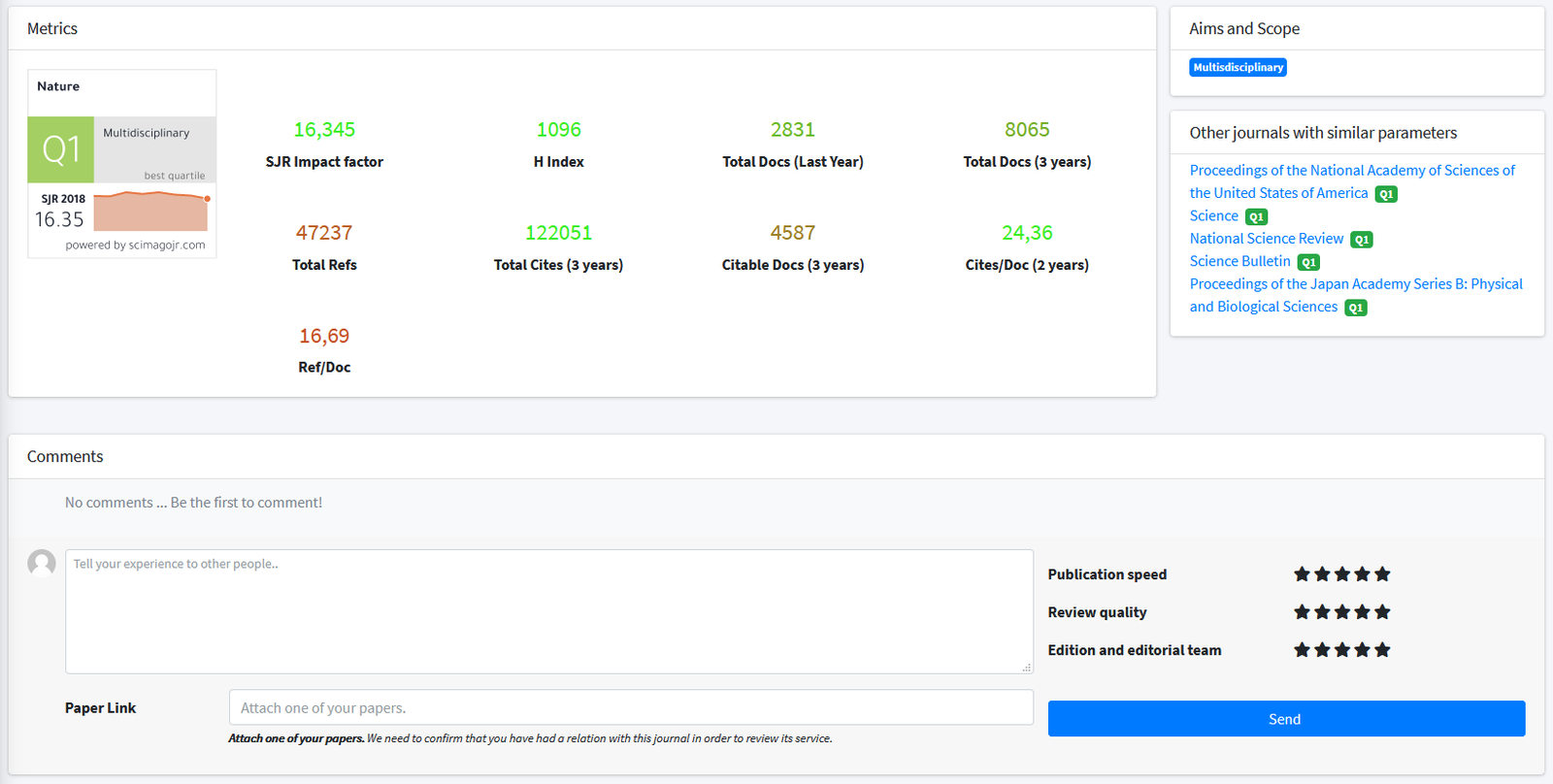
ISSN: 1744-9561
Journal Home
Journal Guideline
Biology Letters Q1 Unclaimed
Biology Letters is a journal indexed in SJR in Agricultural and Biological Sciences (miscellaneous) with an H index of 126. It has an SJR impact factor of 1,293 and it has a best quartile of Q1. It is published in English. It has an SJR impact factor of 1,293.
Biology Letters focuses its scope in these topics and keywords: effects, birds, human, phenology, change, whales, evidence, migration, choice, linden, ...
Type: Journal
Type of Copyright:
Languages: English
Open Access Policy:
Type of publications:
Publication frecuency: -
- €
Inmediate OANPD
Embargoed OA- €
Non OAMetrics
1,293
SJR Impact factor126
H Index190
Total Docs (Last Year)605
Total Docs (3 years)9158
Total Refs2133
Total Cites (3 years)594
Citable Docs (3 years)3.13
Cites/Doc (2 years)48.2
Ref/DocOther journals with similar parameters
Molecular Systems Biology Q1
Studies in Mycology Q1
Biological Reviews Q1
PLoS Biology Q1
Biometrika Q1
Compare this journals
Aims and Scope
Best articles by citations
Pollinator shifts drive petal epidermal evolution on the Macaronesian Islands bird-flowered species
View morePlant mortality varies with arbuscular mycorrhizal fungal species identities in a self-thinning population
View moreBrevity is not always a virtue in primate communication
View moreFemale choice and extra-pair paternity in a traditional human population
View moreA stab in the dark: chick killing by brood parasitic honeyguides
View morePollinivory and the diversification dynamics of bees
View moreThe Early Cambrian tommotiid
View moreGenetics redraws pelagic biogeography of
View moreThe evolution and extinction of the ichthyosaurs from the perspective of quantitative ecospace modelling
View moreTesting Thayer's hypothesis: can camouflage work by distraction?
View moreSelective foraging of fungi by collembolans in soil
View moreExperimentally increased noise levels change spatial and singing behaviour
View moreEvidence for Permo-Triassic colonization of the deep sea by isopods
View moreFlower choice copying in bumblebees
View moreField crickets change mating preferences using remembered social information
View moreRe-orienting in space: do animals use global or local geometry strategies?
View moreLife history, sexual dimorphism and 'ornamental' feathers in the mesozoic bird
View moreAn offspring signal of quality affects the timing of future parental reproduction
View moreTrans-generational immune priming in a social insect
View moreSinging in the moonlight: dawn song performance of a diurnal bird varies with lunar phase
View moreThe heritability of multiple male mating in a promiscuous mammal
View moreExperience pays: offspring survival increases with female age
View moreThere is no trade-off between speed and force in a dynamic lever system
View moreBayesian and parsimony approaches reconstruct informative trees from simulated morphological datasets
View more

 If you are a journal editor you can claim the journal profile and add new information for the visitors.
If you are a journal editor you can claim the journal profile and add new information for the visitors.
Comments